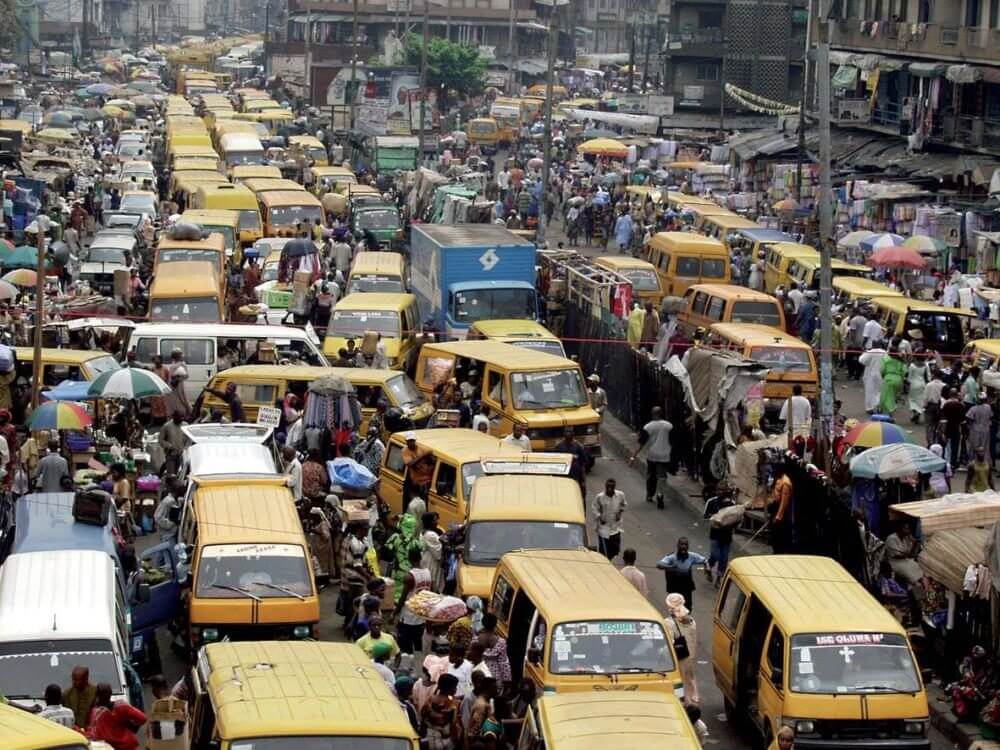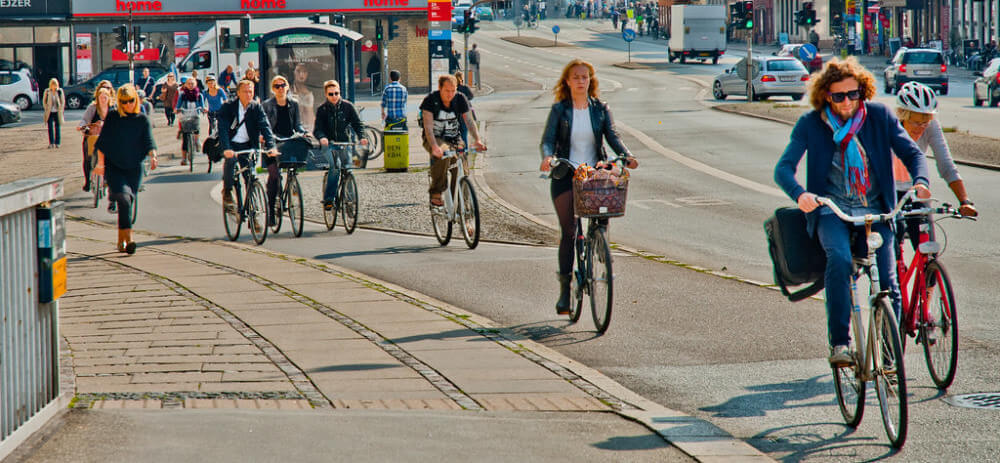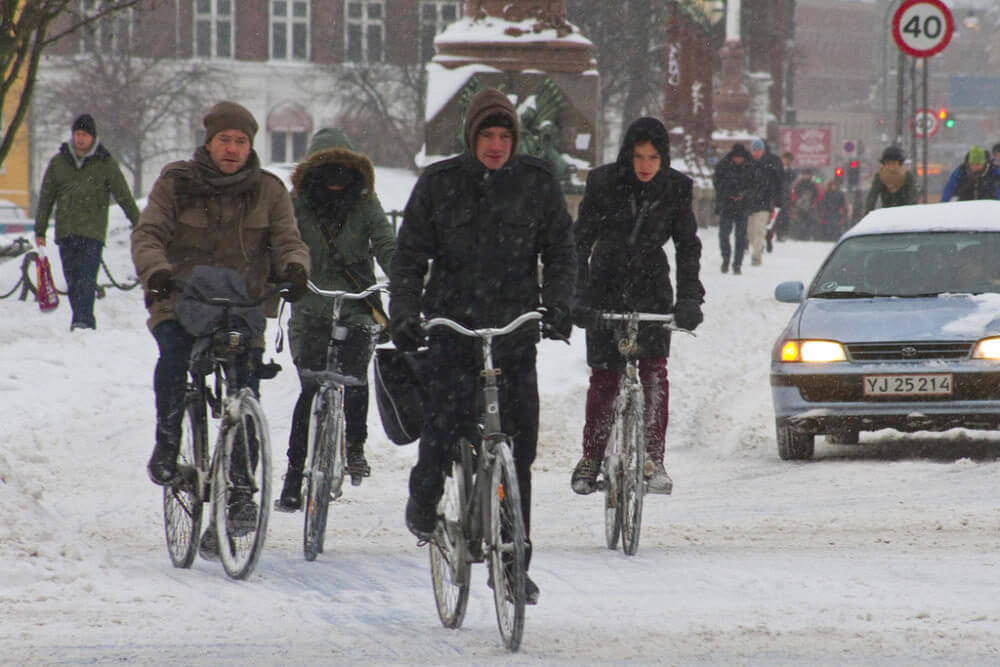The future of sustainable urban mobility
Recently since Capri bikes we have participated in a debate on the future of sustainable urban mobility, as bicycle manufacturers we have had the opportunity to defend our point of view on this issue that affects a large part of the world’s population and that has undoubted long-term effects.
First We talk about urban mobility because of the growing importance of urban mobility. cities on the planet with the figures that show that by the year 2050, an estimated 70% of the world’s population will live in cities and by the year 2100, 70% of the world’s population will live in cities. we will reach figures of around 80%.
Sustainable, because if measures are not taken looking for long term solutions, the mobility problems will be serious, but not only environmentally. where transportation is the main source of air pollution for 40% of the world’s countries and the second most important for the rest, it is also important to look for solutions that guarantee security, that are inclusive and egalitarian and therefore social, and equally sustainable. from an economic point of view, so mobility has to be sustainable:
- Environmental
- Segura
- Social
- Financially
On the other hand, when dealing with this issue, there is a tendency to focus on developed countries with urban, economic and social realities that are very different from those of developing countries where the problem will be much more serious.

According to the Global Cities Institute, the 50 most populous cities in the world in the year 2100 will be:
| 1 | Lagos, Nigeria | 88,344,661 |
| 2 | Kinshasa, Democratic Republic of Congo | 83,493,793 |
| 3 | Dar Es Salaam, United Republic of Tanzania | 73,678,022 |
| 4 | Mumbai, India | 67,239,804 |
| 5 | Delhi, India | 57,334,134 |
| 6 | Khartoum, Sudan | 56,594,472 |
| 7 | Niamey, Niger | 56,149,130 |
| 8 | Dhaka, Bangladesh | 54,249,845 |
| 9 | Kolkata, India | 52,395,315 |
| 10 | Kabul, Afghanistan | 50,269,659 |
| 11 | Karachi, Pakistan | 49,055,566 |
| 12 | Nairobi, Kenya | 46,661,254 |
| 13 | Lilongwe, Malawi | 41,379,375 |
| 14 | Blantyre City, Malawi | 40,910,732 |
| 15 | Cairo, Egypt | 40,542,502 |
| 16 | Kampala, Uganda | 40,136,219 |
| 17 | Manila, Philippines | 39,959,024 |
| 18 | Lusaka, Zambia | 37,740,826 |
| 19 | Mogadishu, Somalia | 36,371,702 |
| 20 | Addis Ababa, Ethiopia | 35,820,348 |
| 21 | Baghdad, Iraq | 34,103,466 |
| 22 | New York , United States of America | 30,193,444 |
| 23 | N’djamena, Chad | 28,814,762 |
| 24 | Kano, Nigeria | 28,277,450 |
| 25 | Sana’a, Yemen | 27,213,206 |
| 26 | Lahore, Pakistan | 27,005,610 |
| 27 | Chennai, India | 25,812,847 |
| 28 | Tokyo, Japan | 25,630,537 |
| 29 | Bangalore, India | 24,767,999 |
| 30 | Ibadan, Nigeria | 23,680,127 |
| 31 | Luanda, Angola | 23,550,753 |
| 32 | Hyderabad, India | 23,170,146 |
| 33 | Bamako, Mali | 22,950,973 |
| 34 | Mexico City, Mexico | 22,219,013 |
| 35 | Dakar, Senegal | 21,177,983 |
| 36 | Maputo, Mozambique | 21,070,106 |
| 37 | Shanghai, China | 20,796,384 |
| 38 | Ouagadougou, Burkina Faso | 20,630,806 |
| 39 | Antananarivo, Madagascar | 20,528,576 |
| 40 | Los Angeles, United States of America | 20,011,865 |
| 41 | Rio de Janeiro, Brazil | 19,844,691 |
| 42 | Ahmedabad, India | 19,711,953 |
| 43 | Abidjan, Cote d’Ivoire | 19,701,522 |
| 44 | Sao Paulo, Brazil | 19,121,182 |
| 45 | Chittagong, Bangladesh | 18,824,191 |
| 46 | Abuja, Nigeria | 18,780,791 |
| 47 | Kigali, Rwanda | 18,300,407 |
| 48 | Jakarta, Indonesia | 18,216,212 |
| 49 | Pune, India | 17,321,544 |
| 50 | Conakry, Guinea | 17,231,406 |
The trend is clear, the new mega-cities will be located in developing countries and will be Therefore, in order to imagine the future of mobility we have to take into account their specific realities, their particularities and their specific challenges, these cities in fact, they are experiencing the most rapid urban growth in human history.
Mobility plansare currently in place The majority of these cities tend to promote public transportation with infrastructures that allow the movement of a greater number of people, mainly through streetcars, trains and fast urban bus routes, although the adoption of all these measures varies greatly depending on the country we are talking about, there is a general awareness of the problem.
In any case and given the difficulty of the problem, the objectives are focused on:
- Establishing a governance system efficient and responsible to enable the implementation of the measures.
- Avoiding the need for transportation motorized, with 80% of the population in Africa being non-motorized, an shift to the private car would mean collapse and worse utilization of the vehicle. of valuable public space in cities.
- Maintain and promote the use of public transportation and active mobility, walking or cycling.
The cycling revolution that has arisen from the pandemic of the covid-19 has promoted the creation of bicycle lanes not only in the major cities but also in cities in Europe, but also in Africa, have seen how initiatives to boost the cycling in Nairobi, Lagos, Addis Ababa or Kampala have served as an example of the to give greater impetus to non-motorized mobility policies, such as solution for a sustainable mobility future.

Contenidos
The future is highly unpredictable
It is important to have a broad vision of what urban mobility means and not to have just think in fact of the possible mega-cities and medium and large cities. small, it is also important to think about their location, their economy, their culture, and also take into account the climatic aspects, and the possible Unexpected adverse effects that may affect any approach to for example, situations such as the one experienced with Covid-19, which has significantly altered all approaches to mobility and the way we think about it. future that had been carried out to date.
Likewise learning from the past about other disruptors such as a shift significant increase in energy costs (the example of the oil crisis). 1972, which added to the number of deaths for traffic accidents forever changed mobility in Amsterdam).
Very we are likely to face extreme climatic situations with more frequency, which will include more hurricanes, flooding, very high temperatures and elevated etc.
Finally, and no less important are the possible changes at the social and political level, the possibility of collapse or transformation of some major powers, and disruptive social movements that may arise.
Also the different demographic realities and their changes will affect any approach to mobility, mortality estimation, fertility(https://www.thelancet.com/article/S0140-6736(20)30677-2/fulltext) and migratory movements among other aspects will significantly affect the realities of all these different cities.
Because it is necessary to think about the long term
Making plans considering possible urban scenarios so many years into the future sounds like fantasy, unattainable and very difficult to implement, business predictions are usually made for 10 or at most 20 years, and over such periods, they are the necessary strategies are constructed, at the political level, in order to It is difficult to observe very long term approaches, and even worse those that are are usually truncated or modified subject to the cycles of legislatures and short-term interest.
In the case of mobility is highly conditioned by the fact that it is highly conditioned by the and the decisions that are taken affect time scales that are much longer than those of the For example, we live in cities designed for cars. for over 100 years and where today they are the biggest obstacle to any approach to improving urban mobility because of the tremendous competition that exists for the occupation of scarce public space.
The importance of interest
Although the large entities such as the United Nations, the European Union and others are working for a long time to push towards sustainable mobility the global ecosystem, it is very important that the ecosystem of large, medium and small companies feel attracted to it, but unfortunately, most of them put the focus on a small part of the problem without taking into account the more complex solutions. important as active mobility, due to the lack of economic interest, innovation and lack of disruptive elements that are apparently present in the forms of active mobility.
The capital tends to invest in what has growth potential in the medium term, and so if the trend shows a growth in car sharing it will go there, if the trend is to move towards autonomous cars, it will move in that direction, and as capital is an important fuel for change will push opinion, and the conversation towards its poles.
Another part of interest is generated by the novelty and the logical attractiveness of a new product. innovative subject, which easily generates strong trends of interest from the general public.
In other words, when we hear about the future of mobility, we are much more likely to hear about autonomous mobility than active mobility. For example, a search for “autonomous cars” on google generates 148M results, while “active mobility” generates only 456K.
Thus the amount of content generated globally on the topic of “autonomous mobility” is 324 times greater than the term “active mobility”, now let’s think in a possible global context of cities described a little above, which of the two can better help solve the challenges facing the planet, this is an example of the importance of interest to drive change.
Electric cars
The European policy reaction to the challenges of urban mobility of the future aims to focus on environmental sustainability by forcing the transport industry to move towards zero CO2 emissions and to do so pushes what for everyone is the future of the automotive industry, 100% electric vehicles, and even more so where everyone is putting the focus of the future:
Without place to we will undoubtedly experience significant progress on these four fronts, which affect important way to mobility, but none of them in itself can provide the critical mass of solution that other elements can.
Throughout In this case, thinking only about the problem from a local perspective and ignoring the difficulties that the large cities of the future are going to have to face in accessing is to think in the short term, since the problems that do not in emerging countries, sooner or later they will become a problem. our own problems.
How Covid-19 affected the Covid-19 plans mobility
Another of the important aspects for building a mobility strategy for the region. future is to see how the global pandemic has overturned the established plans by cities, there are some key indicators:
Public transportation has fallen by 40% in cities like Madrid and even in the summer of 2021 maintains falls compared to 2019, this is a very common problem to many cities, the problem is more serious than it seems, these public entities so necessary at the same time they have seen reducing their income there are increasing expenses with increased cleaning requirements and also come with fleet renewal plans towards a zero CO₂ emissions, usually more advanced than the private sector, the financial stress of all these public transport entities is difficult to bear for economies with skyrocketing debt, and this is common to almost all European cities and much more serious for the fledgling public transport plans of cities in emerging countries.
The use of bicycles has skyrocketed. This is an indicator that can be seen from Bogotá to Nairobi, and of course with a very strong incidence in cities such as London or Paris, where the tremendous investment in infrastructure was also boosted by the implementation of temporary bike lanes.
People are moving less, already in the 5th wave and the incidence of the teleworking and the rise of e-commerce are yielding figures of between 5 to 14% less movement in large cities, and many of these cities have customs will be here to stay.
Car sharing and the micro-mobility sharing have fallen significantly, and although they are adapting their offerings and The predictions are very positive, with a very positive renewal of its model. for these solutions.
The As car purchases from second-hand cars skyrocket, people are looking for safer transportation alternatives such as alternative to public transportation, reversing the desired need for an change in the car fleet.
The best solutions are those that can survive in environments of proven hostility.
All these aspects and some other aspects show that it is very difficult to make long-term plans. and how a disruptive element such as a global pandemic brings about radical change in the model.
This would be naïve to think that in the next 100 years we will not be subjected to elements with a great capacity for transformation and a good exercise is to think about whether or not our strategies have more or less fragile ingredients.
On the other hand there is the issue of perception, whether or not an element can really affect our future, there is the perception of it by society, those fears can slow down the adoption of new solutions.
Although the issue of perception is something that can be worked on in the long term, we must not forget the fears of society in the short (3-5 years) and long term (in this case 5-10 years) risks as analyzed by the World Economic Forum. where there are elements such as the breakdown of IT infrastructures, failures in cyber security, adverse situations that can generate technological advances, all these aspects are in the minds of citizens and although it would be foolish not to advance in the internet of things and the future that can bring us a more connected and efficient mobility, it should not be the axis of the solution but a complement to it.

Back to the future, bicycles as part of the solution
The strongest mobility strategies tend to put people at the center, prioritizing active mobility, such as walking and cycling, focusing on the organization of cities with optimized urban planning to move more people in the same space.
Cities like London, Paris, Seoul, Singapore or New York are implementing these very aggressive strategies to give priority to people and relegate cars to the background, what is already a reality in cities like Copenhagen or Amsterdam shows that with the right planning very high levels of cycling can be achieved, drastically reducing pollution, safety, health and integration problems.
According to a survey of bicyclists in Copenhagen, 56% of bicyclists in the Danish city biked for the simple fact that they got to their destination faster, 19% biked because it is healthier, 6% biked because it is a cheaper means of transportation, and only 1% biked because bicycling is good for the planet.
The conclusion is that if you want to stop people from using cars, you have to by bicycle or by walking and public transport to reach their destination. before, that’s the key.
Yes We converted a two-lane street with two lanes of cars in both directions to a two-lane road. of public transportation, more bicycle lanes and wide sidewalks, leaving only 1 lane for cars, we can move 10 times more people than with cars.
But there is no We must not forget that what is good for some is good for all, every city, each company has its own needs and copying a strategy that will a company functions in a society without adapting it conveniently to the uses of mobility. of the other can result in a tremendous failure of the strategy.
We have a mission, to save the planet and improve the lives of millions of people, and the fastest, longest lasting and most effective way is the bicycle.